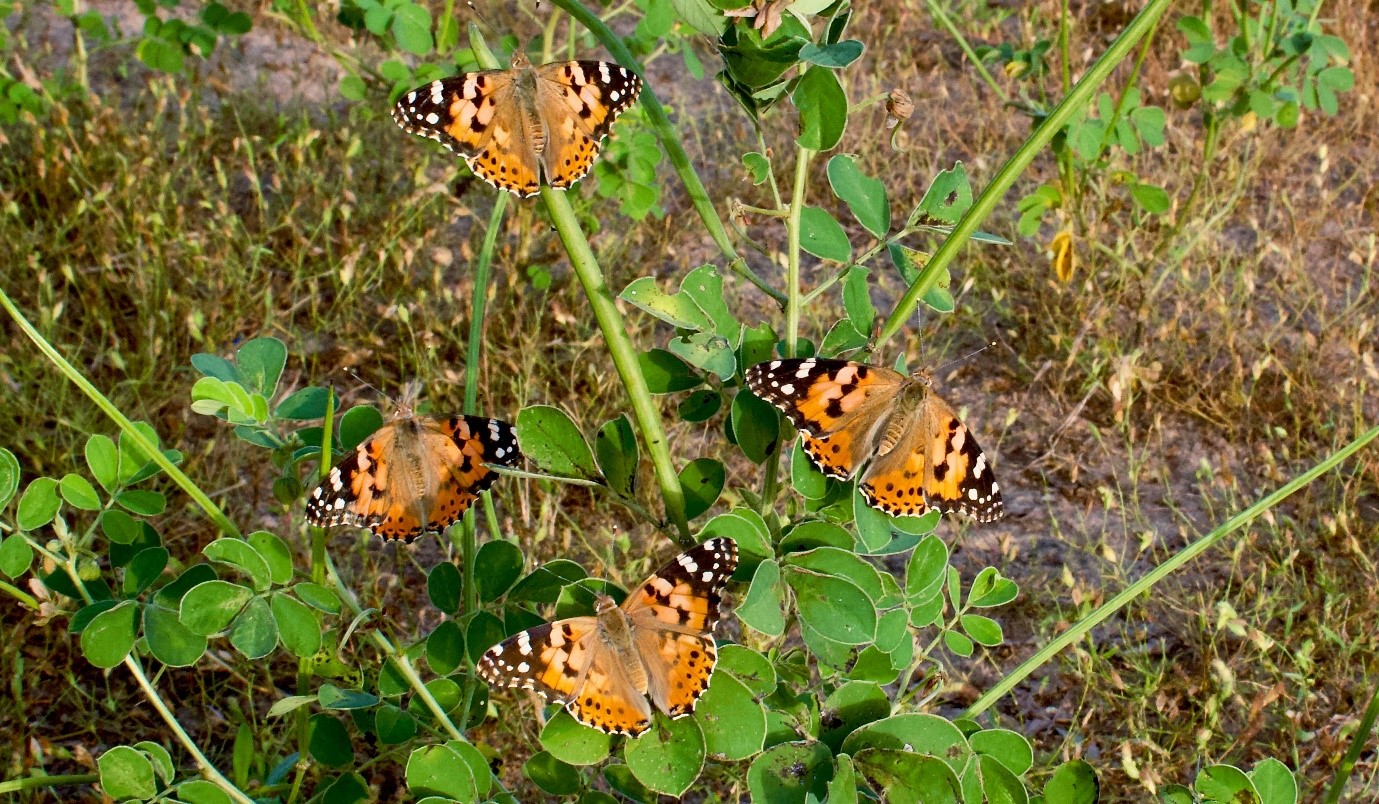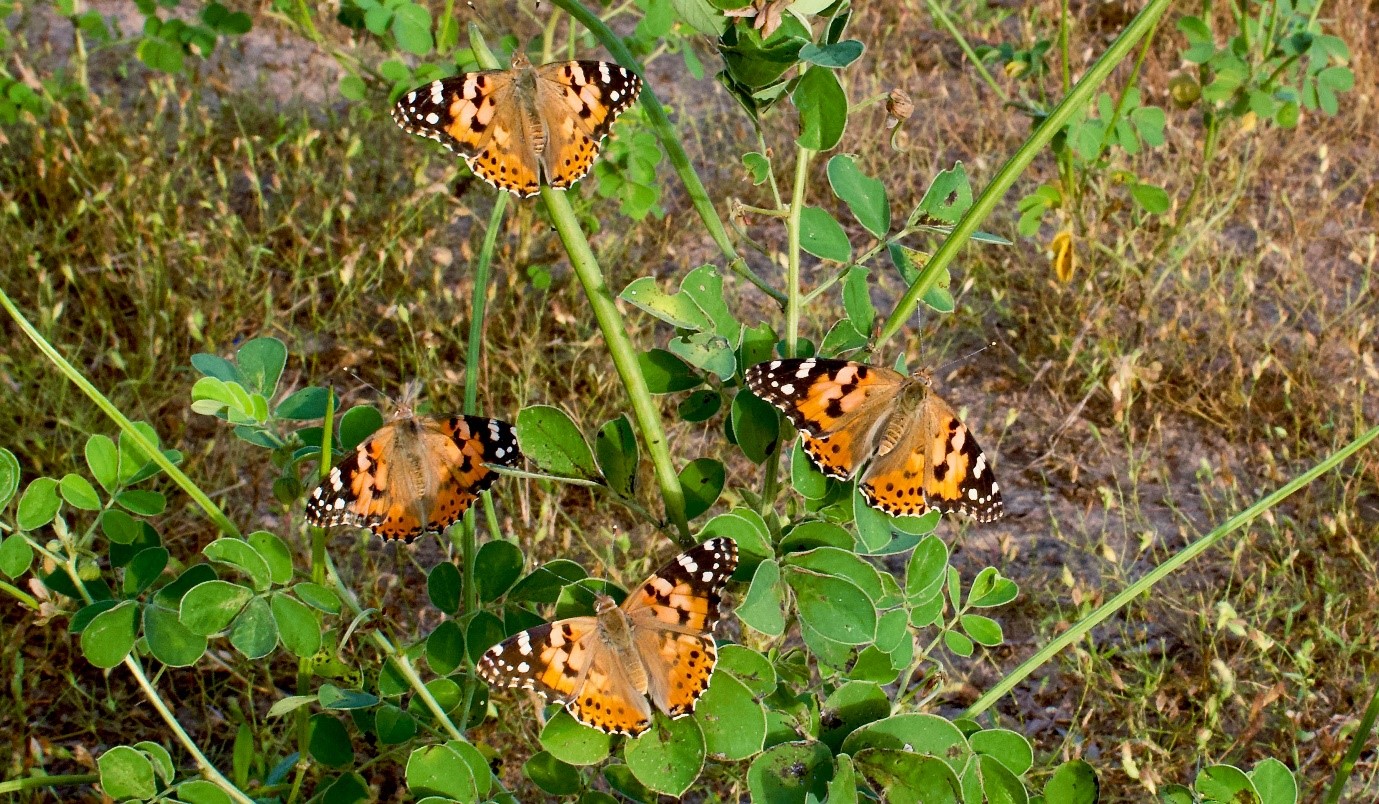A study discovers the regions in which the butterfly Vanessa cardui spends the winter
The work led by CSIC teams completes the migratory cycle of this butterfly and extends it to 15,000 kilometers, making it the longest known migratory route for insects.
An international collaborative effort has made it possible to monitor annual breeding cycles in sub-Saharan African countries.
The cardera butterfly (Vanessa cardui) is, along with the monarch, one of the most emblematic migratory species and a model for biological study.

The Cardera butterfly (Vanessa cardui) migrates tens of thousands of kilometers every year, in several successive generations. Recently, CSIC scientists discovered that this species could cross the Sahara from Europe in autumn, and return at the end of winter, but the places where it spends the winter months in sub-Saharan Africa were unknown.

A group of cardero butterflies spreads their wings to warm themselves in the sun. Author: Gerard Talavera
Now, an investigation led by Gerard Talavera, a researcher at the Botanical Institute of Barcelona (IBB), a mixed center of the CSIC and the Barcelona City Council, and Roger Vila, a researcher at the Institute of Evolutionary Biology (IBE), a mixed center of the CSIC and the Pompeu Fabra University, has managed to identify these places and solve the complete migratory route of the butterfly. After years of exploration and fieldwork in sub-Saharan Africa, scientists have managed to identify locations in Kenya, Uganda, Cameroon, Benin, Ghana, the Ivory Coast, Senegal, the Canary Islands, and Ethiopia where Vanessa cardui can breed from October to February.
The work, which is published on the cover of the journal Proceedings of the National Academy of Sciences (PNAS), has been led by researchers from the Botanical Institute of Barcelona (IBB, CSIC-Barcelona City Council) and the Institute of Biology Evolutiva (IBE, UPF-CSIC), with the participation of an international consortium with researchers from up to 17 other institutions.
“The key has been to investigate the ecological requirements of this species to be able to reproduce in Africa, which is different from those in Europe. Using ecological modeling methods with data from 1,268 breeding sites in 35 countries, we were able to make monthly predictions of possible African areas where they could breed during the European winter,” explains Gerard Talavera.
To test the predictions obtained from the modeling methods, the scientists conducted multiple expeditions and established a two-year continuous monitoring network with local partners, the first large-scale monitoring network for an insect in Africa. Field observations made it possible to document up to 280 new, hitherto unknown breeding sites in Africa, as well as to identify the host plant species that the caterpillars of this butterfly need to develop.
The authors highlight the role of rainfall in migratory dynamics during the part of the annual cycle that takes place on the African continent. “Once they colonize sub-Saharan Africa, the different generations migrate following the growth of new vegetation produced by the rains. While the vegetation allows them to reproduce from September to November in areas of the Sahel and the extreme north of the Savannah, these regions become dry until the next rainy season, almost a year later, so they progressively move further south to areas more humid and to mountainous regions between December and February”, comments Gerard Talavera.
Knowing the migratory cycles of insects is of great ecological importance
The migratory phenomenon in insects is very little known at the moment, largely due to the technical difficulty of tracking the movements of such small organisms. However, the study of the cardera butterfly exemplifies that the regions through which some insects regularly migrate can be very wide, including several continents.
The ecological implications of these large-scale movements are very relevant but require further study. The method developed in this study demonstrates that reliable predictions can be made about the temporary habitats required by migratory species, which can help conservation efforts and studies on habitat changes due to factors such as climate change.
This study, financed by National Geographic, and also with the participation of the Fundació Barcelona Zoo, the British Ecological Society, the CSIC, the Ministry of Science and Innovation, and the Government of Canada, highlights the importance of carrying out biodiversity monitoring at long-term, as well as the need to carry out fieldwork to generate data that allows making reliable predictions in ecology.
Reference article:
Talavera G, García-Berro A, Talla VNK, Ng'iru I, Bahleman F, Kébé K, Nzala KM, Plasencia D, Marafi MAJ, Kassie A, Goudégnon E, Kiki M, Benyamini D, Reich MS, López-Mañas R, Benetello F, Collins SC, Bataille SPC, Pierce NE, Martins DJ, Suchan T, Menchetti M, Vila R (2023). The Afrotropical breeding grounds of the Palearctic-African migratory painted lady butterflies (Vanessa cardui). Proceedings of the National Academy of Sciences (PNAS) 120 (16) e2218280120, https://www.pnas.org/doi/10.1073/pnas.2218280120






















